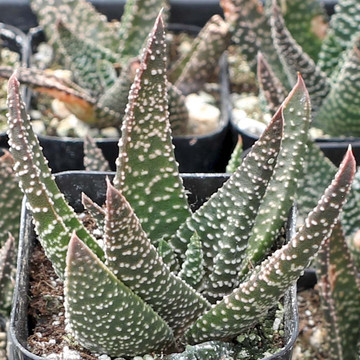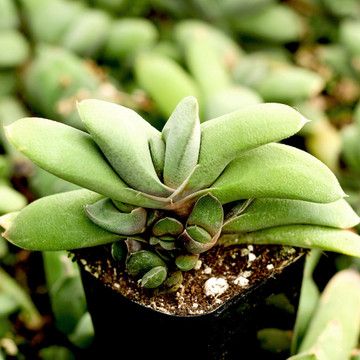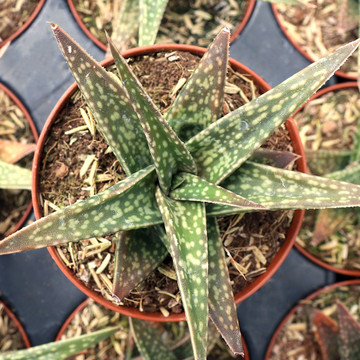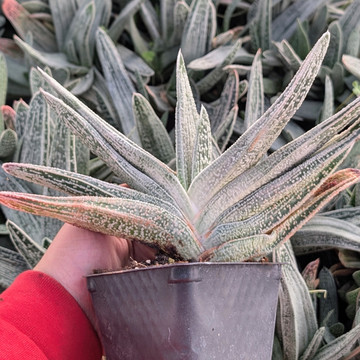Gasteria (gas-TAIR-ee-uh) is the best succulent variety for indoor growing and an easy-to-grow oddity, even for plant novices. These slow-growers have an eye-catching look and can survive even in dark rooms. When it comes to low-maintenance, exotic houseplants, Gasteria can’t be beat.
APPEARANCE
- Form: Range in height from under 1.0" (G. bicolor var. liliputana) to 2.0ʹ tall (G. acinacifolia). All varieties grow distichously (like a fan) at first and most spiral into loose rosettes as they age. They offset freely to form mounding clumps.
- Colors: Tend to be dark green tones; the high chlorophyll content helps them tolerate low-light conditions. Many are also marked by speckled patterns of white or light green. Orange, pink, or purple flushing can result from moderate stress from bright sun or extended drought.
- Foliage: Strap-shaped leaves grow in pairs and have a rough texture like the skin of a lizard. Some varieties are also covered with bumps or "tubercles".
- Flowers: Numerous tubular, coral flowers dangle from tall bloom stalks. Their blooms can attract hummingbirds and different species bloom in different seasons.
CARE
- Light: The best variety for low-light conditions, Gasteria can tolerate indoor conditions better than any other succulent. In frost-free weather, they can also grow outdoors in shade or partial sun.
- Soil: Choose a gritty, well-draining soil to prevent standing water and rot. Use a commercial cactus and succulent soil or mix your own (more info).
- Water: These drought-tolerant plants need only deep, infrequent watering. Drench thoroughly then allow soil to fully dry before watering again.
- Hardiness: Will not tolerate hard frosts, but overwinters well indoors. (What’s my zone?)
- Propagation: The easiest way to propagate Gasteria is to separate and transplant new offsets that appear around the base. New plants can also grow from leaf propagation.
NOTES FROM THE NURSERY
Lack of light is one of the most common challenges when growing succulents indoors. Uniquely, Gasteria can thrive even in low-light conditions. They are native to South Africa and usually grow in the shade of shrubs. All grow in rocky soil and some even survive in the crevices of cliffsides.
The Latin name "Gasteria" refers to the curved, bulbous flowers of this genus that are shaped like a stomach. This genus is closely related to the Aloe and Haworthia groups and is equally easy to grow. Their appearance is quite variable and an individual plant can look quite different throughout its life. For the moment, taxonomists recognize 26 different species of Gasteria, though there are also lots of exceptional cultivars.
READ MORE











